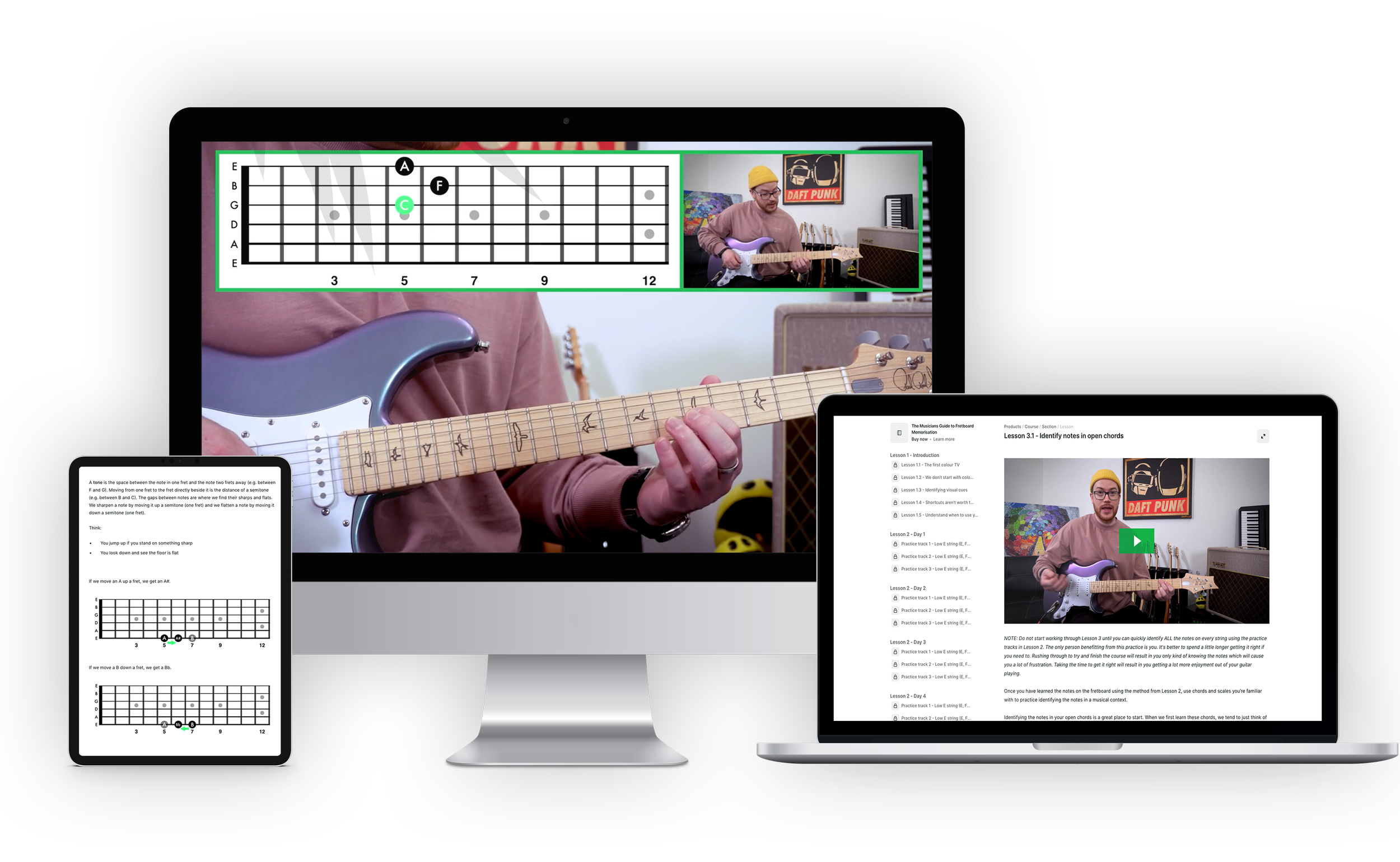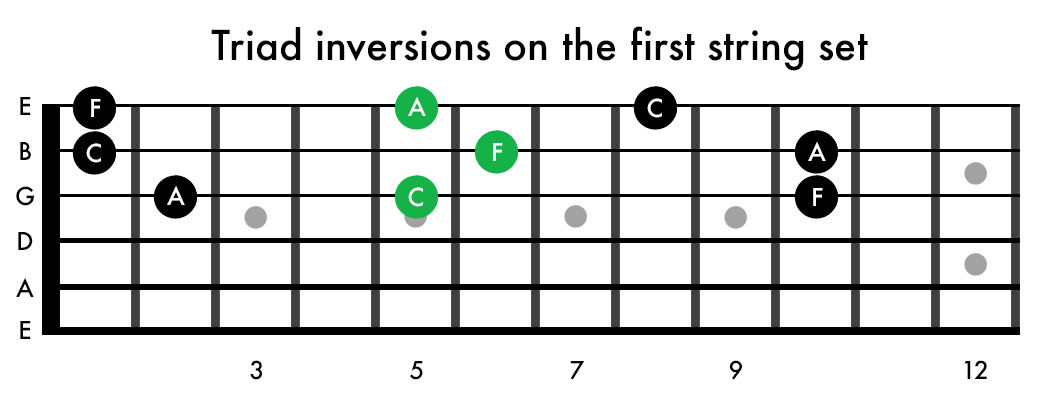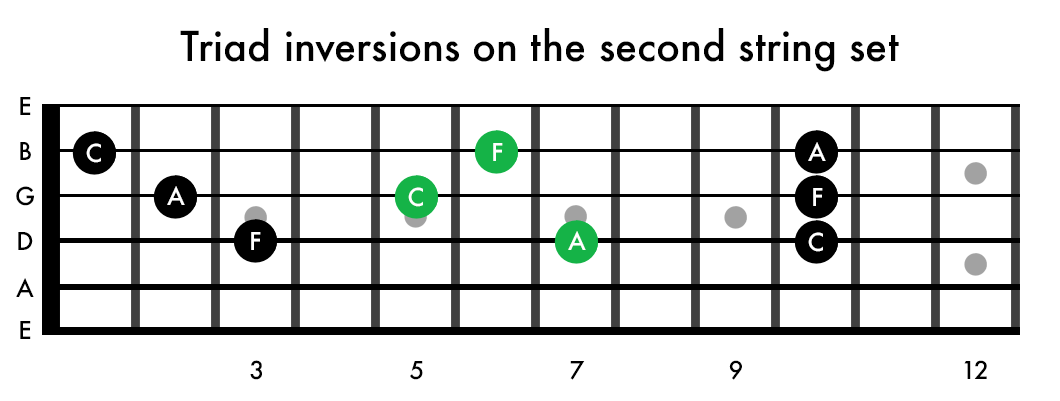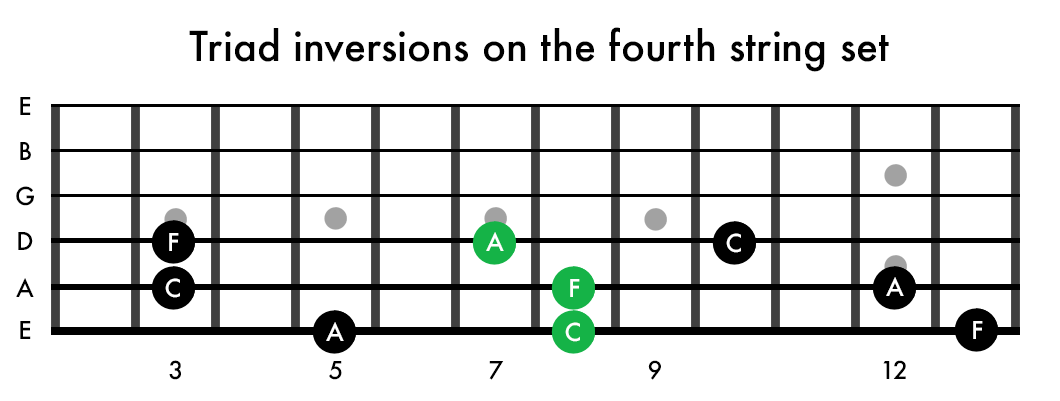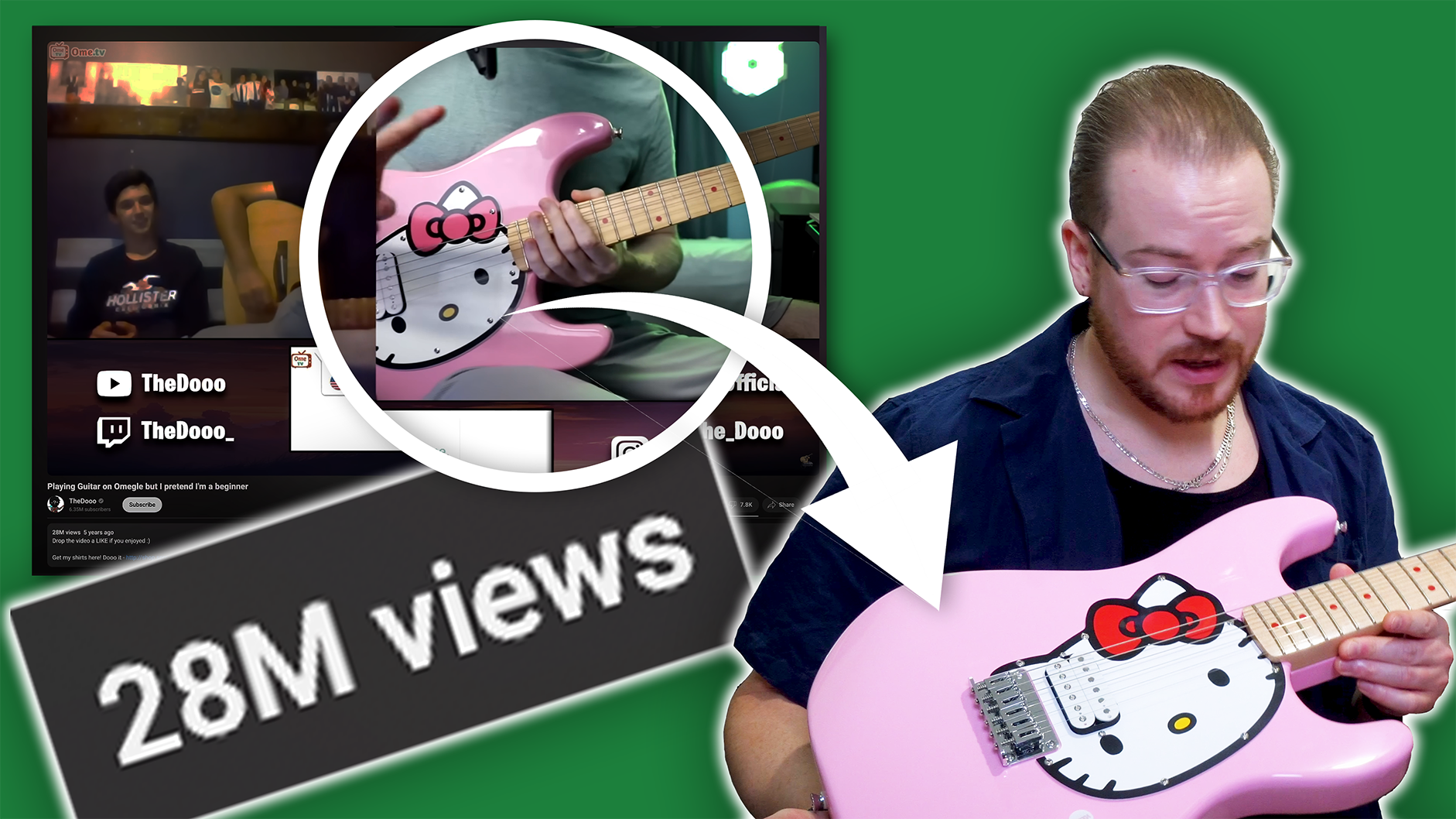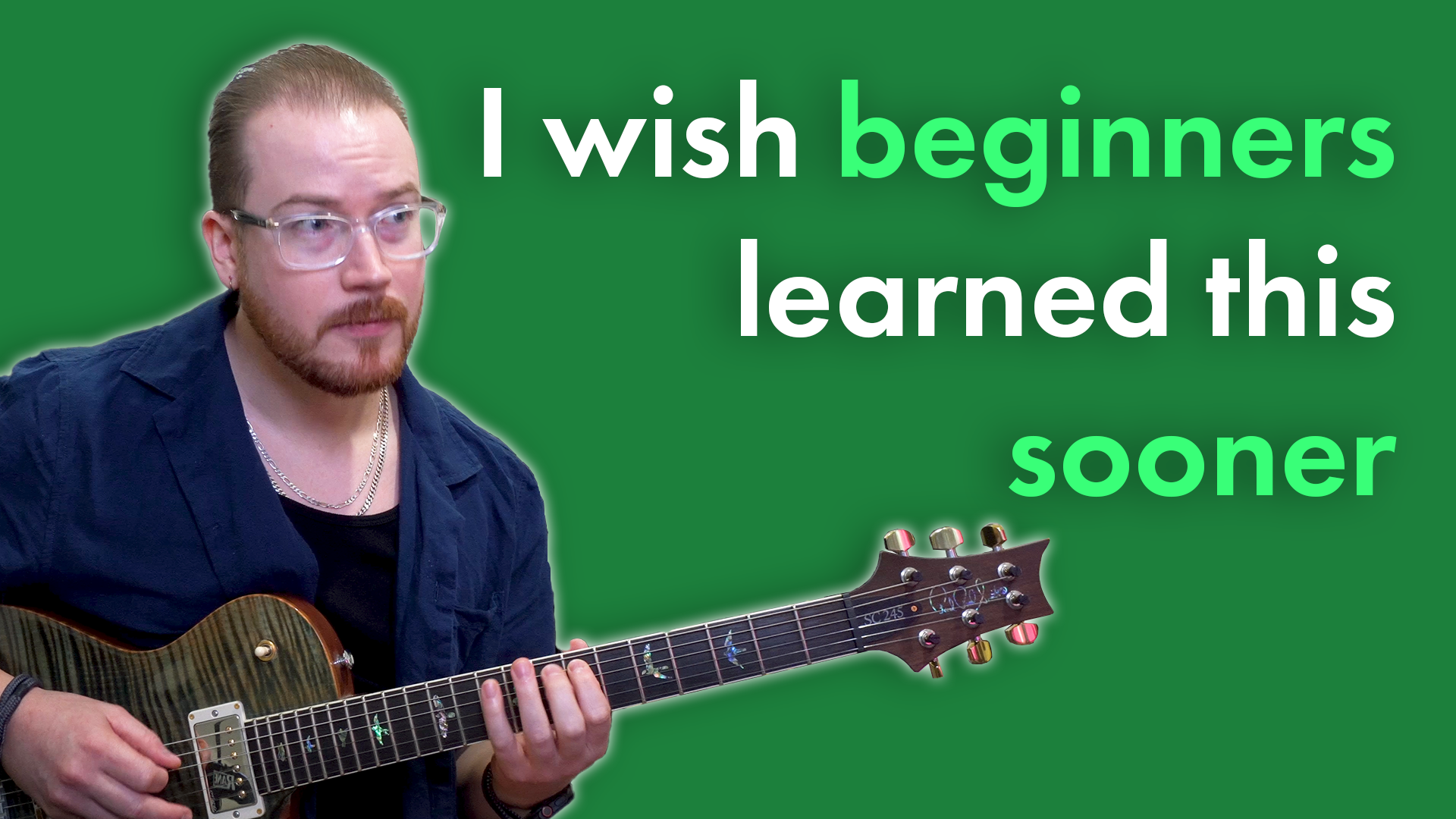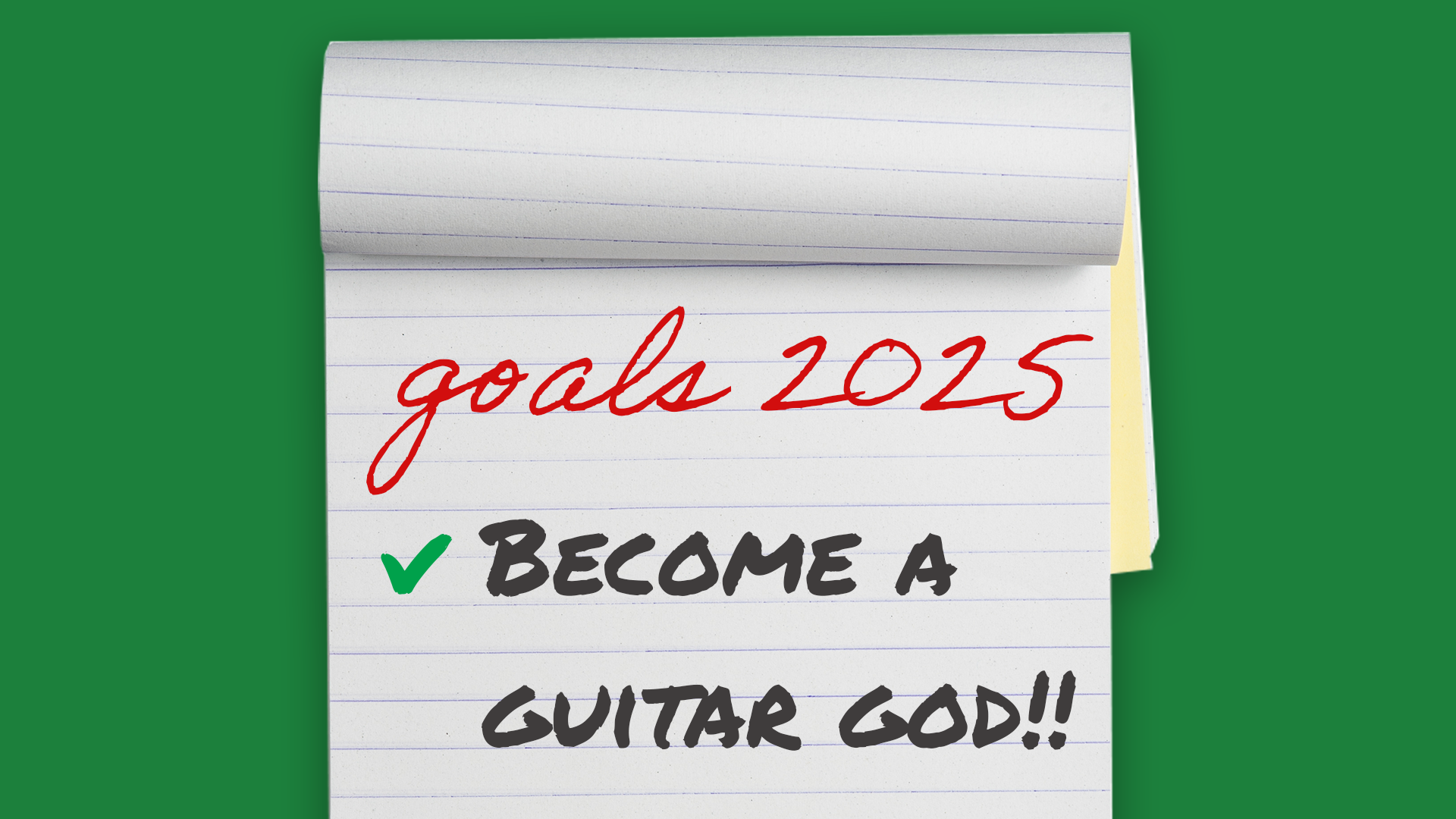How to practice triads
A student I was teaching articulated a problem he’d had where he found himself in a jam situation that was a little more chilled out. A genre he felt wasn’t appropriate for the typical kind of ‘lead’ playing he was used to doing. However, he didn’t feel that just playing the chords he knew overtop of everyone else’s chords was appropriate either.
“You've got to be flexible. But, I realized that I wasn’t. All I had was lead, right? Which isn't particularly useful in this situation because you can't just have lead all the time. What's your approach to learning triads and how could I add triads to my practice in a meaningful way?”
Excellent questions on the part of my student.
In this lesson, we’re going to talk about triads and how we can apply them on the guitar.
The myth of rhythm and lead guitar
An important thing you’ll notice as you progress through your journey as a guitar player is that there aren’t different ‘music theories’ for different things we do on the guitar. If you’re playing rhythm guitar, you don’t have a special ‘rhythm guitar’ music theory that you pull out of your back pocket to apply all of a sudden. And, you don’t put that away and switch it out for your ‘lead playing’ music theory when it’s time to take a solo.
Music is just music.
Having said that, when we’re starting out as beginner guitarists, we do tend to group ideas into tidy little categories in order to help us focus our attention and better integrate our understanding (physical, aural, and intellectual) in regards to the specific thing we are learning. However, as we progress these tidy little categories tend to become less and less defined and the edges blur into one another.
We might apply our understanding of music differently depending on the context - whether we’re playing rhythm or lead. However, it’s still the same music theory we are drawing from.
Think of it like this:
When it comes to writing down words, we use a single alphabet. We don’t have a special alphabet for adjectives and then whip out our other one when it’s time to write a proper noun. Rather, we draw what we need from the alphabet as it’s needed.
Avoid a one-dimensional approach to learning
One approach to learning triads would be to find some cute little chord shapes and simply memorise them.
But that is a very one-dimensional approach to learning triads and will result in you having a very one-dimensional approach to applying triads.
Our ultimate goal should be to understand how every note behaves over everything else that's happening contextually while we're playing. If we understand what notes form the triad we are playing we can do fun things like superimpose a triad over a completely different chord in order to imply an entirely new tonality.
For example, let’s say you’re playing with a band and everyone is playing an E minor chord. If we choose to play a G major triad over top of that E minor chord, we will imply an E minor seventh chord.
Em (E G B) + G major (G B D) = Em7 (E G B D)
When we talk about implying a chord, we mean that no one musician in the band is playing the chord; rather, the combination of notes played by all the musicians creates the sound of the implied chord.
In the example above, the keyboard player might be playing an Em chord. The guitarist might decide to play a G major chord over top of that. The result is that we hear an Em7 chord.
Don’t be tempted to use shortcuts
At this point, my student very astutely pointed out that the desire to get things down as quickly as possible often results in us trying to find shortcuts. When we are learning music, shortcuts are a bad idea. A shortcut doesn’t allow us to integrate our understanding properly and often means we find it difficult to apply the thing we are learning in other contexts. We are also more likely to end up with gaps in our knowledge that we have to fill later. It’s tempting to use a shortcut to learn something quickly right now. But if you’re serious about your guitar playing, it’s best to avoid them.
Discover how to learn the notes in a way that not only develops your fretboard fluency but reinforces your overall musicianship.
The problem with not understanding music theory
The ironic thing about taking shortcuts and trying to avoid music theory is that you inevitably end up creating your own music theory.
You have to develop your own reasons to understand why a chord sounds the way it does or is played in a particular place. This also often limits the functionality of the principle you are trying to apply.
You could take a shortcut and just remember that playing this particular chord shape (the G major from above) over an Em chord sounds good. But you’ve still come up with your own reason why it works. Your theory is that this shape played on this fret sounds good over this chord. That’s an explanation that only works in that specific situation and doesn’t relate to any other aspect of music. If you understand that you’re superimposing a G major triad over an Em triad to form an Em7 chord. Well, that’s music theory we can apply with the notes of any G major chord anywhere on the fretboard.
If you don't understand what's happening from a musical point of view, then you have to come up with some kind of hack to explain to yourself why what you're doing works. You can either learn it properly and have an extensive understanding which will allow you to use the knowledge in whatever situation you like, in any way you like. Or, you can try and come up with your own explanation that is only applicable to one specific example.
Triad chord shapes on the guitar fretboard
Below are the 12 triad shapes available across the three different string sets on the guitar. Even though these shapes look different, they are all exactly the same (once we factor in how the B string interrupts the patterns).

